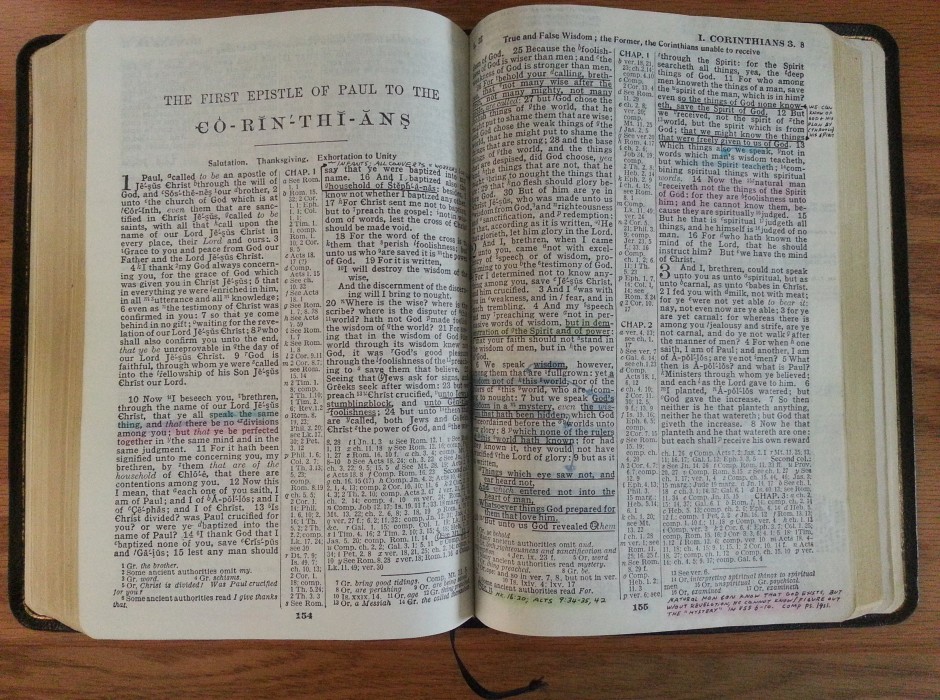Let’s take a look at 1 Corinthians 11 and the question of wearing the veil. This is a very good text to use to illustrate the question of command or culture because there is command within the text and we also have a counter example in the observance of the Lord’s Supper.
We have observed three things, so far, relative to the wearing of the veil:
1. This is the only passage in the NT that deals with the wearing of the veil. We do not have much information to go on and subsequently, we ought to be very careful about being dogmatic when it comes to arguing that this is a command intended for all Christians everywhere, for all time.
2. In fact, as I have pointed out, there is no command for wearing the veil here in 1 Corinthians 11. We might be able to infer that they were commanded to wear the veil, and we will get to that shortly.
3. Finally, when we did a word study on 1 Corinthians 11:16, we learned that Paul says that if anyone is contentious, we have no “such” custom, nor do the churches of God.
What about the Greco-Roman / Jewish culture of the day? I would argue that if the veil was a custom of the culture, then it is not a custom of Christ unless we have clear evidence that it is.
What do the dictionaries and encyclopedias say? For one thing, the veil in the OT (54 times) is mentioned either in the context of a wedding (Genesis 24:65; Song of Solomon 4:1, 3: 6:7) or in the context of obscuring one’s identity (Genesis 38:14). Most often the word “veil” is used in the OT to refer to the veil of the temple / tabernacle. What that shows us is that there is no Old Testament precedent for wearing the veil. God did not command Israelite women to wear a veil in worship, in offering sacrifices.
To be honest, there is not a lot of information out there on the veil and sometimes you will read contradictory information on it. According to the ISBE, the veil refers to “various types of garments worn as coverings, but their exact nature is often unclear” (IV: 967).
This is where commentaries and special studies come to be helpful. A professor of Bible at FHU, Kevin Moore, did his master’s thesis on this text (We Have no Such Custom: A Critical Analysis of 1 Corinthians 11:2-16). In his thesis, he examined the original Greek and Jewish sources that use the word for “covering” or “veil” and considered their context.
Dr. Moore summarizes his research: “Apparently it was the general practice among nearly all culture, especially Roman, Greek and Jewish, for respectable women to have long hair and to regularly keep their heads covered in public (cf. Grant and Kitzingen 3:1405). This was particularly expected of married women, in order to show their faithfulness to their husbands. Virgins and prostitutes, on the other hand, in trying to attract men, did not always follow this practice” (25). Along with prostitutes, lesbians and adulteresses often had their hair shaved (cf. 1 Cor. 11:5-6).
What all of that points to is this: the head covering for women was a cultural practice, not a Christian practice.
However, there is a permanent principle, taught in 1 Corinthians 11 which has likely led to the confusion over whether we are to continue practicing this today. Verse 3 reads: “But I want you to understand that Christ is the head of every man, and the man is the head of a woman, and God is the head of Christ.” The role of women in the church and in the family has consistently been that of an assistant, a helper, rather than a leader. That teaching goes all the way back to the Garden of Eden. It has dominant OT precedent as well as precedent in the calling of only males to be apostles of Christ. 1 Corinthians 14:34-35 and 1 Timothy 2:11-12 are also consistent with the picture that women are to be submissive to men in the church. Only men can serve as elders and deacons. Ephesians 5:22-25 shows that men are to be the leaders in the home. The Scriptures are clear on that.
What we have pictured in 1 Corinthians 11 is a social custom reflecting a theological truth. Compare that with what we know about the Lord’s Supper (11:17-26). The Lord’s Supper is not a cultural custom. It has OT precedent and a clear NT command to observe it. Also, it was practiced widely and 11:26 tells us that it is a permanent command – “until He comes again.”
–Paul Holland

